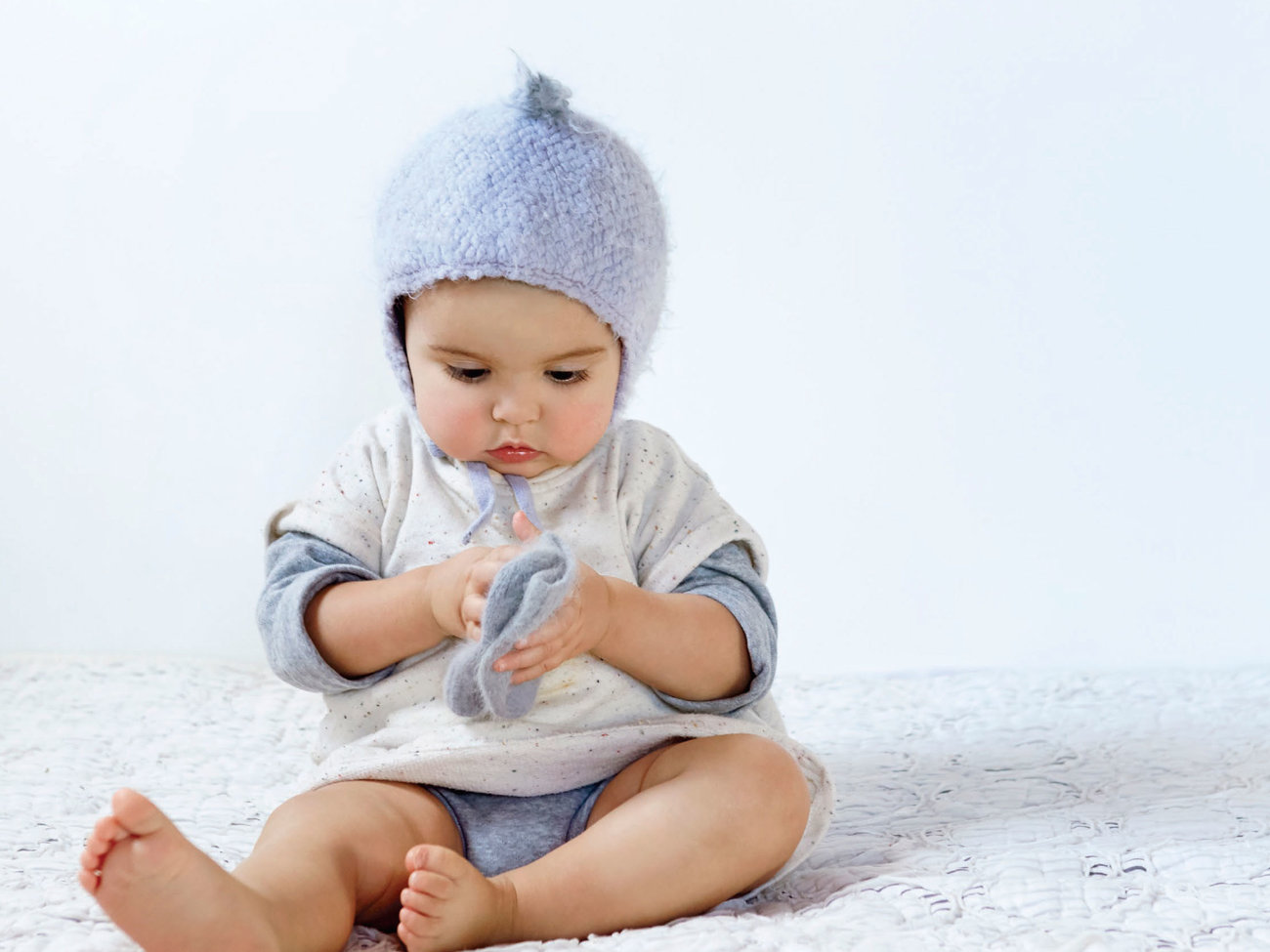
DIY Red Cabbage–Dyed Baby Hat & Mittens

Red cabbage was one of the first natural dyes I fell in love with; this mundane vegetable, with its gorgeous range of natural colors, was used by our great-grandparents as a way to simply dye and re-dye items at home that needed refreshing. Cabbage is an easy-to-grow, medicinal, healthy crop. I continue to enjoy using it for dyeing projects with children; it is a great introduction to the wonder of natural dyes, and the cabbage easily turns color—depending on the pH of the soil it was grown in, the water used as dye, and whether you add an acid or a base. Red cabbage is also an excellent seed-saving project, if you choose to grow your own.
Red and purple winter cabbages make beautiful pastel lavenders, blues, and light greens on soft merino and angora wools—a wonderful way to naturally color a baby’s winter hat and mittens. With this project, you not only work with heirloom knits, but also refresh your little one’s garments with natural color recipes from an heirloom plant that can be passed on from generation to generation. Also, because the cabbage color can be so easily modified, it can be a wonderful way to simply change the color or pattern of your hat and mittens from baby to baby, adding a new layer of creativity and special hue for each new addition to the family.
MATERIALS
- Natural angora wool baby hat and mittens (about 4 ounces)
- pH-neutral soap
- 1½ teaspoons aluminum sulfate
- 1½ teaspoons cream of tartar (optional)
- ¼ head of red cabbage, cut into 1- to 2-inch chunks
- ¼ teaspoon white vinegar (optional)
- ¼ teaspoon baking soda (optional)
